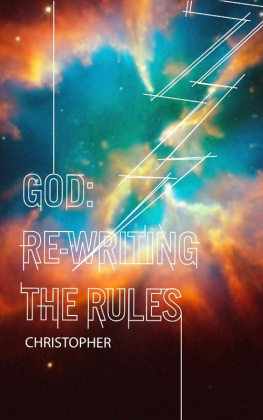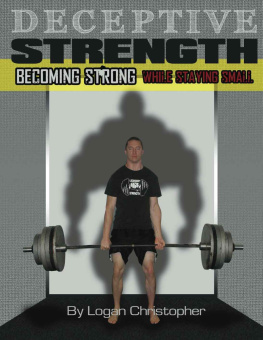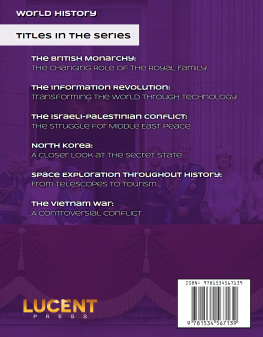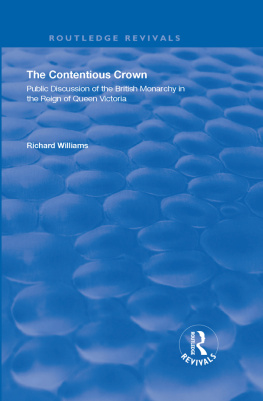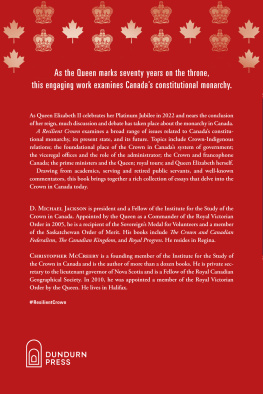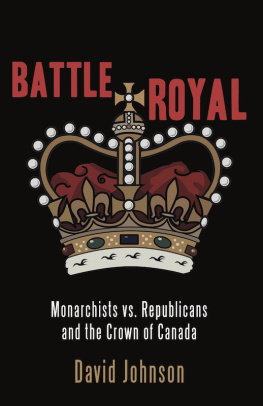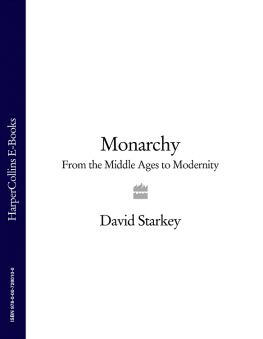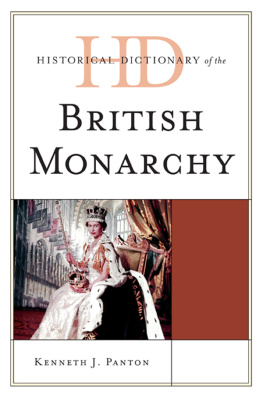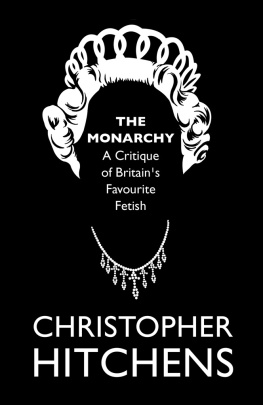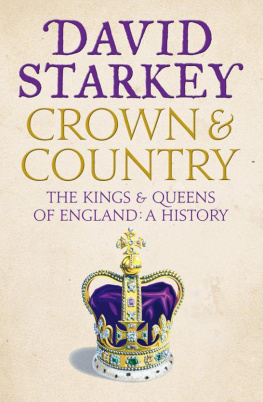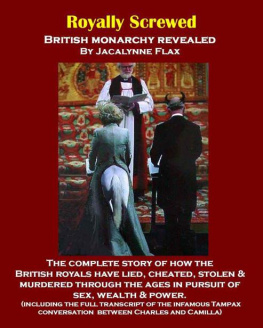T o thank those who helped in higher places is an inadequate expression, but itll have to do. Those who advised and suggested and who inhabit grand (yet often shabby) corridors did not want names mentioned. I am not sure why that should be. Be it is, so I shall respect that. The use of the Ipsos-Mori polling was invaluable even though it is all in the public domain. Pulling it together in this way puts monarch and monarchy in distinct perspective. Anthony Weldon, whose ancestor was so close to monarchy in an apparently satisfying manner (at least for the then monarch herself who borrowed a sword to ceremonially bless him), has been encouraging in nudging through the idea during never overly-long luncheons in St James and patient when a deadline was missedon one occasion when I had to down tools to comment at the BBC on the funeral and its arrangements for the late Baroness Thatcher. Then of course there has to be a sure indication of my ever appreciation of the way staff in the Music and Rare Books Reading Room at the British Library continue to be the best friends a sometimes muddle-morning writer can have. The opinions, interpretations and conclusion, of course, are all mine.
T he twenty-first-century British monarchy is unambiguously aligned to concepts of Saxon kingship and the Christian Church, and the influence of both continue to be inconclusively debated. Moreover, as with many other monarchies, the British crown is since the eighteenth century dynastical. Thus the modern monarch is linked to the history of a millennium of British crowns, even though the families are not necessarily so. It is our purpose neither to record a history of kings and queens of England nor to judge each as a good thing/king or otherwise. Therefore, what follows is the painting of an impression of the march of monarchy after the Normans invasion and, in making it, the development of a notion of why, say, the British and Japanese monarchies have lasted so long.
In earlier centuries, island nations have been harder to conquer. Tides, weather conditions, limitations of boat construction and stability, and thus restrictions on reinforcements and logistics, suggest island monarchies have been simpler to defend or, put another way, harder to attack. Even during the later Middle Ages and Tudor centuries, when the English were threatened with invasion by the exceptionally ambitiousand papally encouragedCatholic French and Iberian monarchies, the advantage was always with the islanders. The most quoted example has been the planned invasion by the Spanish in 1588. The Armada was dispersed by terrible weather conditions. Even if it had landed, the Spanish and mercenary force would have faced formidable resistance from conditions ashore.
More than two centuries later, Napoleons extraordinarily ambitious plans (at least fourteen of them) to invade from Boulogne were partially thwarted by his seemingly total lack of understanding of the limitations of larger vessels, tidal conditions, hull designs and beach reconnaissance. However, the fact that the British Isles were hard to penetrate does not entirely explain the survival of the monarchy. Duke William invaded successfully, but the British monarchy did not fall. Only the Saxon house of Godwine was overcome. The Danish monarchy as a throne that ruled the state as well as the people began in the first half of the tenth century and the first sovereign was Gorm the Old.
In theory, the Danish monarch was elected, although the crown without exception was successfully claimed by the eldest son in line and in 1660 (the date, coincidentally, of the re-establishment of the English monarchy) the constitutional elective monarchy was dropped in favour of an hereditary manner of succession. Four years later, this was reinforced to honour primogeniture so that the male line was guaranteed. It was not until 1953 that an Act of Succession made way for a queen. There were no outside pressures for these changes. Just as constitutional affectations came from within the British system, so they did in other monarchies. The illustration of the Danish royal line becomes significant when we consider one of the most important themes in the monarchy of quite different nationsthe gradual thought that many and sometimes, at different periods in the history of state monarchy, all monarchies were related, and remain so.
Long before Britain had a king who ruled the land mass as well its peoples it was not unusual for a victorious chieftain, and so later a king, to signal the end of the conflict, even a battle, by marrying one of his children either to the defeated or victorious opposing king, or to one of his children. In effect, the joining of the two families was the most uncomplicated sign of peace. For hundreds of years before even Hastings, we have good evidence of post-war arranged weddings between former enemies. Many of them would continue to be enemies, but the symbolism was clear: the Saxon king would give a daughter to the invading monarch. For example, one of King Alfreds daughters, Aetheflaed, was given in marriage to the Ealdorman of Mercia (and later became Mercias queen) and another, Aelfthryth, was married off to the Count of Flanders. Without relying on brides as war trophies, more recent European royal families also interwed; in Denmarks case, King Christian IX was the father-in-law of Europe. His first daughter, Princess Alexandra, married Queen Victorias heir Bertie, the then Prince of Wales, and so became Queen Alexandra. Another of Christian IXs princesses, Dagmar, married Tsar Alexander III of Russia; Princess Thyra (18531933) married the Crown Prince of Hanover and the Third Duke of Cumberland and Teviotdale, Ernst August (18451923), who was a second cousin of the future Edward VII. It was his son, William, or Wilhelm, who in 1863 became King of the Hellenes (Greece) as George I. Here was the line from which the husband of Elizabeth II, Prince Philip, descended. The very erratic nature of the claims and counterclaims on European territories and thrones during the Middle Ages emphasised dynastic identities of what we would now see as complete states or countries, whereas, say, five or six centuries ago, the sovereignty of peoples did not assure sovereignty of state. Thus once more we find intermarriage by desire or convenience (mostly the latter), and therefore later claim and counterclaim on authority of regions and greater states.
The Spanish throne has a broken hereditary line, but the present monarchy dates from the eighth century and only the Japanese monarchy is older. Above all, Spain is a simple example of earlier societies undergoing similar transitions quite independently of each other, but with not dissimilar effects. The Vikings invaded the British Isles from across the sea in similar manner to the Arab invasion of the Iberian Peninsula during the seventh and the eighth centuries. Just as Britons withdrew into regional strongholds before the Danish advances, so the Arabsthe Moorshad the Christian Iberians, with their royal Visigothic origins in the fifth century, on the run into the northern regions. Although the eleventh-century King of Navarre, Sancho III, is credited with beginning the fight-back to reclaim Iberia, it took some four centuries before the Moors were defeated and Spain became three regions, Navarre, Aragon and Castile. Again, what we saw in Saxon Englandthe marriage of a royal daughter to a sometime enemywas a common tactic to unite warring factions and cultural opposites. Just as in England, this did not always work. For example, when in the early 1100s, the King of Aragon married the heiress of Castile, the diplomatic ruse failed because their DNA was too similar and the consequent consanguinity made it impossible to maintain the dynasty.


